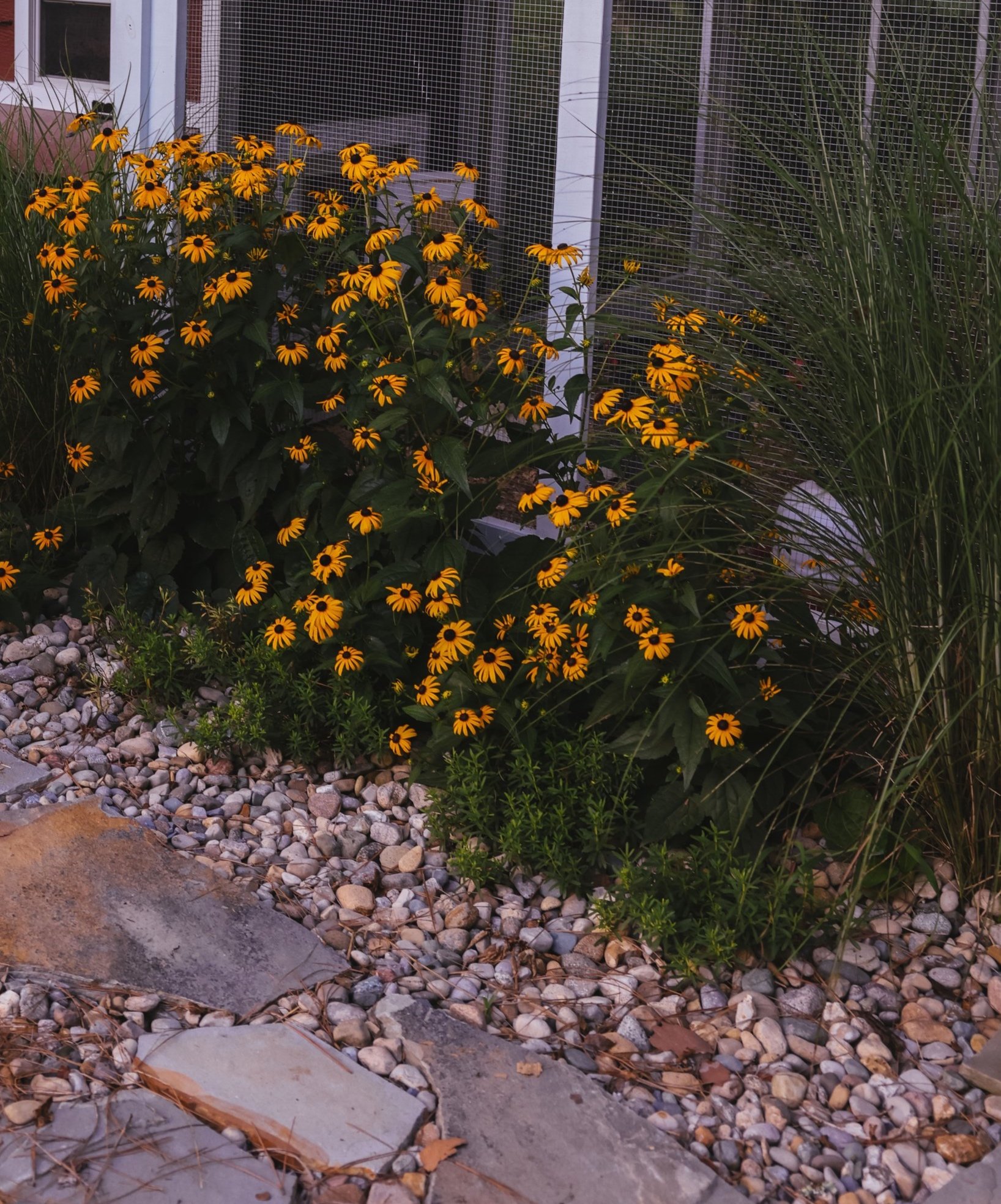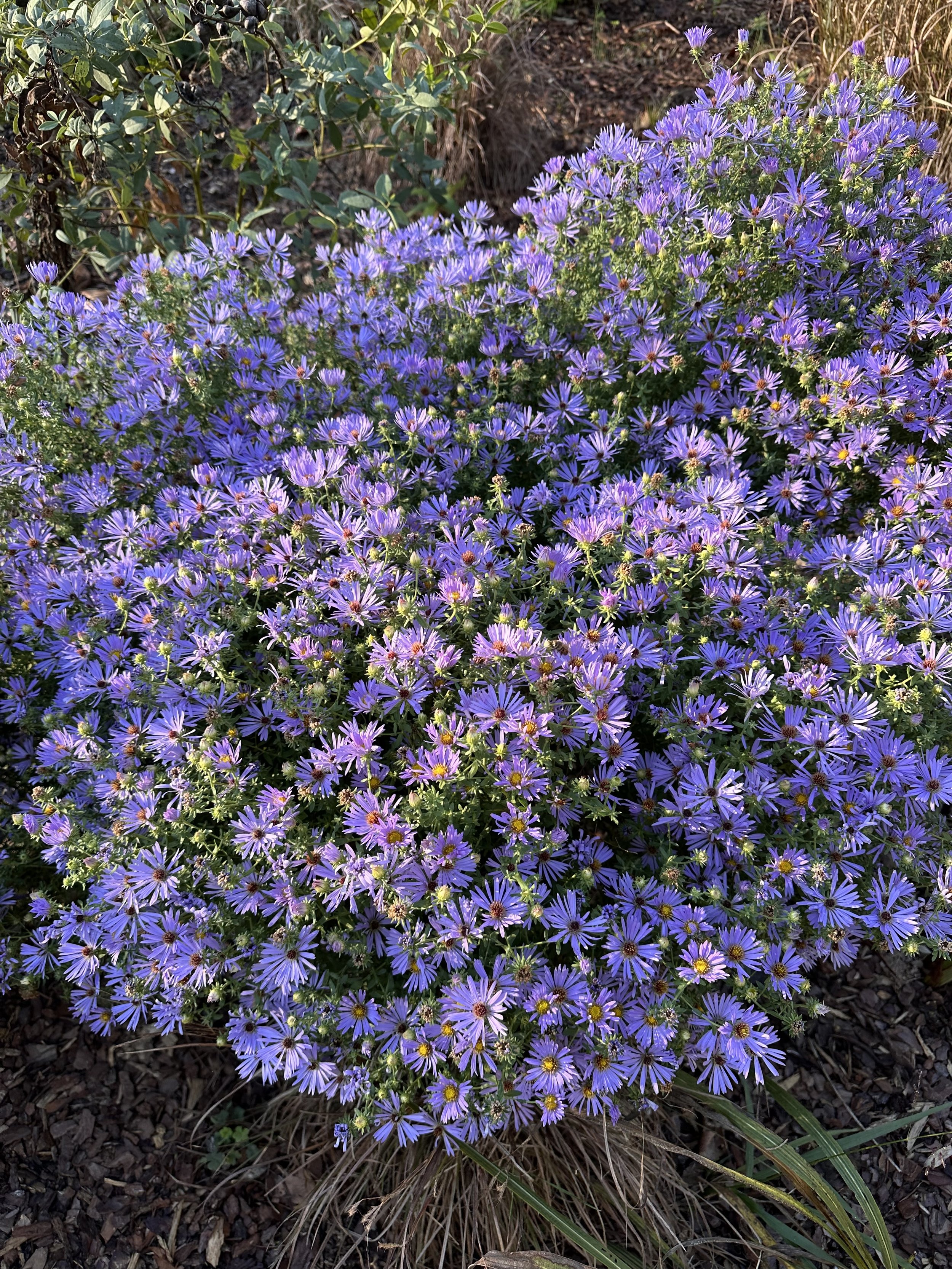Local Planting
Why Plant Local?
There are many benefits to planting native plants that support your local ecosystem.
The best place to begin is in your own backyard. If you have no land at all, potted plants can still make a positive difference. Native plants provide food and habitat for local wildlife, especially butterflies, insects, and birds. These species play vital roles in pollination, pest control, and maintaining biodiversity. Because of the way native plants evolved, they have developed resistance to local pests and diseases. This natural resilience means they require fewer pesticides and herbicides, which helps protect water sources. Adapted to their local soil and climate, native plants thrive in their environments with minimal care.
Once established, these plants require less supplemental watering. This will help you conserve water and lower your water bills over time. Additionally, many native plants have deep roots that prevent erosion, improve soil structure, and enhance water infiltration.
Planting native plants is a simple, yet impactful step that can leave a legacy for future generations to enjoy.
getting started...
-
Planning
Before you can start digging, it is important to research what plants are native to your area. There are organizations all over the world that provide free and accessible lists. Knowledge is power!
Here are two options to make a quick search:
www.plantforchange.org and www.nativeplantfinder.nwf.org
Once you have an idea of which plants work, take a closer look at your intended planting area. The amount of sunlight, proximity to water sources, and soil type are crucial factors to consider. Gardens with full sunlight need sun-loving plants (ex. Black eyed Susans ), while shaded areas are better suited to shade-tolerant species (ex. White Wood Aster). If your garden is far from a water source, consider installing a rain barrel or choosing drought-tolerant plants (ex. Purple Cone flower) to reduce the need for frequent watering.
Think about what YOU want. How do you want it to look? What colors do you like? Gardens are a form of creative expression. Pick plants that you want to see everyday!
-

Preparing
Once you have a basic plan in place, it’s time to get your hands dirty and start transforming your space! If needed, clear the planting site of any grass, weeds, or invasive species to give your new plants the best chance at thriving. To identify unwanted plants versus beneficial ones, consider using a plant ID app. You might already have native plants growing!
Once the site is clear, focus on the soil which is the heart of a healthy garden. Understanding your soil’s pH, structure and nutrient content will help you determine what improvements are needed. Organic fertilizers can replace missing nutrients and create a balanced environment for your plants. If you're unsure, mixing compost into the top layer is an easy way to boost fertility, improve moisture retention, and encourage beneficial microorganisms.
After improving the soil, adding a few inches of mulch to the top layer will help retain moister and suppress weeds.
This preparation will create a rich, thriving environment that your plants with love!
-
Planting
The site is clear and the soil is mended… bring on the plants! By now, you should have acquired the species that you’ve chosen. It is time to get these transplants, bulbs, or seeds in the soil.
When creating a layout it is important to think about the height and size of each plants. Even the choice of perennial or annual can affect how the garden unfolds through the seasons.
Place each plant in its container and arrange them where you want them before digging. This makes it easy to move them around until you find the perfect layout. Be sure to leave enough space between plants so they can stretch and grow. Once you’re happy with how it looks, it’s time to begin!
Dig a hole that is wide and deep enough. Place the plant in the hole and backfill with soil, making sure the top of the root ball is level with the ground. Water thoroughly and repeat the process for each plant. Keep an eye on them as they grow up, and assist however you can. Through consistent watering, protection from bugs or animals, and a bit of stability when needed, these native plants will eventually be well established.
You will reap the rewards of beauty and wildlife activity in your very own yard, and your local eco-system will thank you!









